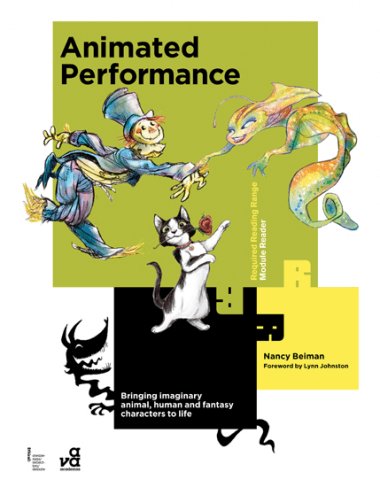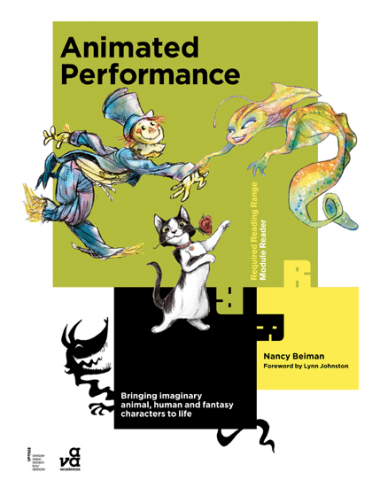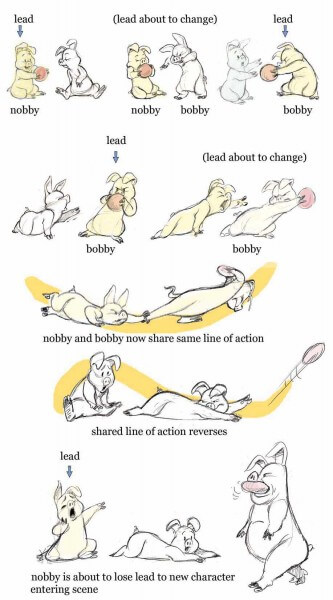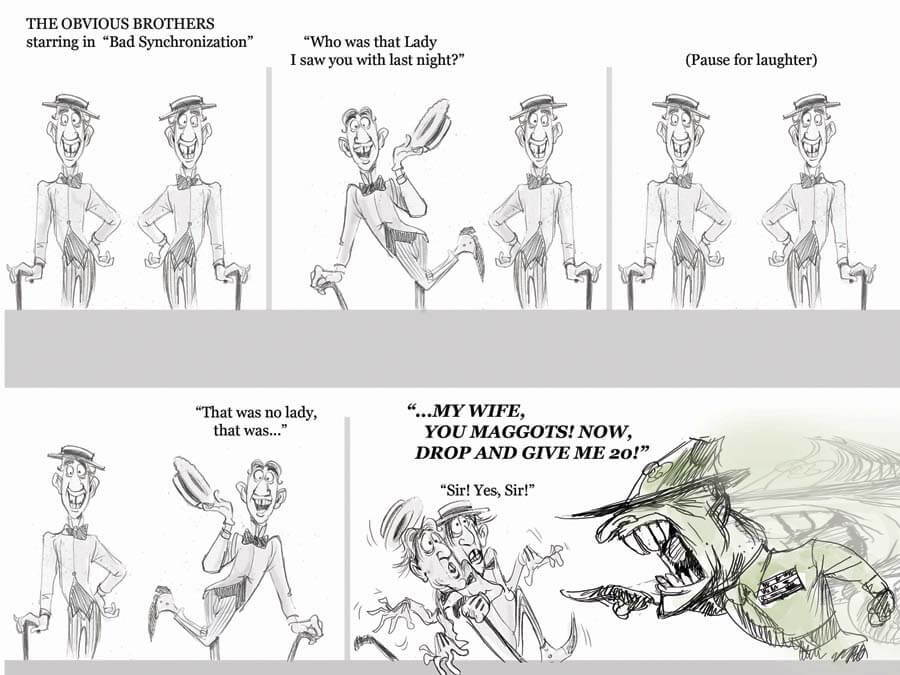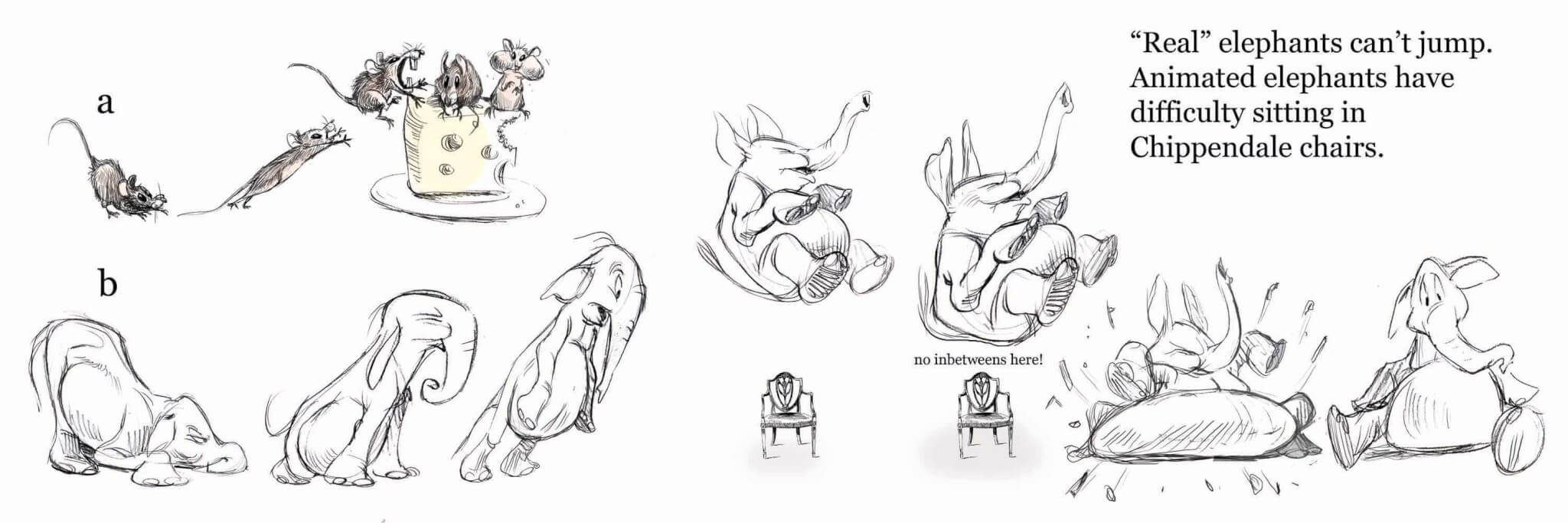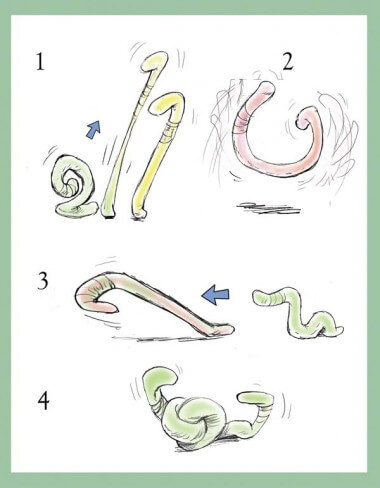An Interview with Nancy Beiman: Animator, Author and Educator
Performance in animation is one of the most important aspects to get right. With performance you can truly feel the characters emotions, goals and aspirations and those goals help shape the story. How lucky for us to have interviewed Nancy Beiman author of “Animated Performance: Bringing Imaginary Animal, Human and Fantasy Characters to Life” which extensively covers this subject that is vital for anyone who wishes to learn the craft of character animation.
Nancy’s skill at both these areas of expertise do not come from nowhere. In 1979 Nancy was part of the original character animation class at the California Institute for the Arts (Cal Arts) sharing her schooldays with the likes of John Lasseter and Brad Bird as well as a whole rosta of talented others, despite being the only girl in the class in what at the time was a very male lead industry her career flourished and she has worked animating some of the most memorable characters in the past 30 years. Here she shares with us some of the knowledge gained working on feature films with Disney, Amblin, Warner Bros and working with classic characters from the Peanuts franchise, Merry Melodies and Silly Symphonies and the lessons that she passes on to her students today direct direct from her directors that include stars such as Chuck Jones and Eric Goldberg as well as CalArts classmate John Musker and Co-Director Ron Clements to name a few.
Now a professor of animation at the well respected Sheridan College in Canada, Nancy passes on her valued lessons to her classes and to her readers through her two publications “Animated Performance” and her extensive look at the storyboarding process for shorts and features in “Prepare to Board! Creating Story and Characters for Animated features and Shorts”. Here she shares some of that knowledge with Skwigly when we caught up for a chat.
Before being awarded the Disney Family scholarship what events of your youth lead you to the world of animation? Was it always a career choice?
I am a fairly late bloomer as far as animators go. I only became interested in the medium when I was about 16, there was a remarkable set of coincidences that got me into it, the first was an English teacher that assigned me a media project that I decided to draw. I made a cut paper film that got me interested. My father mentioned this to one of his friends who worked for an optical printers and he said I should go in and take a look around, when I got there I saw an Oxberry for the first time and was told of Ray Setti at Sunflower films down the street who then taught me animation, at 16 years old I was his youngest student. Now, this is the bit where the long arm of coincidence gets ripped out of its socket! My high school film teacher had connections with Zagreb studios in Yugoslavia, and when they did a show in New York they decided to stop off at our school and Disney had their entire east coast office for educational media in my home town. So they also came to the show. They asked Mr Roberts if he had any seniors interested in animation and they made the connection. So Roy and Edna Disney offered me the scholarship to go to Cal Arts and I declined New York University.
So at Cal Arts I was in the first class of this character animation programme Jules Engels programme had been around first but the Disney studio was re-staffing and wanted to train new people under a more structured system and so they set up a character animation under Jack Hannah in 1975. I was one of the last people added to it I and Mike Cedeno were the last two added, everyone else where on mailing lists and so fourth for years before so far as I know, I was the only one that hadn’t heard of the place and I apply for the school after being accepted, so did everything backwards!
You were part of the first graduating class of the Cal Arts Character animation programme alongside John Musker, Brad Bird and John Lasseter amongst others, were there any other stand out artists in your class and could you tell that some people were destined for the careers they went on to lead?
Everyone in the class was very strong because you had to be. I could not possibly talk about that first class without mentioning Jerry Rees, who was one of the top draftsmen there, a fantastic animator even in his freshman year, also Darrell van Citters who now runs Renegade productions.
We had a 33% dropout rate in the first year because the programme was tough and unforgiving, because the teachers were professional people. At the time they did things you can’t do now, if they didn’t like what you were doing they told you, and by the end of the first year I believe I was the only girl left in the class. That was rough too but you had to take it and get treated like everyone else. I remember Elmer Plummer my life drawing tutor coming up to me and saying “You don’t draw as well as the boys. Today that would get him fired, it made me furious, but not at him, I knew he was right so I went and drew 10 sketchbook pages a day, studied anatomy everyday and I was determined to improve and eventually I did.
You have had the privilege of working on Both Donald Duck and Daffy Duck. On the page these two characters would seem quite similar, are there any subtle nuances that you had to capture for each of them that the audience would not even notice that help distinguish the characters besides the excellent vocal work?
Well the design is clearly quite different, I have always enjoyed animating both Ducks, but there is a noticeable difference between the animation styles of the two studios. I have directors tell me “I want a Bob Clampett Bugs Bunny circa 1943” or “John Sibley’s Goofy” and so I can switch gears and change animation styles for that. The Disney style for Donald is quite fluid animation. The Warner’s style is more snappy style, but it’s not pop into a pose and hold, as people tend to believe, it is just as full as Disney. It may have different emphasis on poses certain things you would do with Daffy you cannot do with Donald even though they both have bad tempers; the interesting thing about him is no matter what you do to daffy it always looks like him. In “Invasion of the Bunny Snatchers” we had a contest to see who could do the worst animation (I won!) as I had most of the Daffy stings and the clean-ups had bits missing and were done in magic marker, no matter what we did with him it still registered as Daffy, but Elmer Fudd could start to turn into a bad imitation of Charlie brown.
Donald is very precise design but he evolved more over time. My personal favourite is around 1938 in films like “Donalds Lucky Day”, when he had the eyes on the side of his head, “Mr Duck Steps Out” is another fabulous cartoon from that time, with the eyes on the side of the head. Eyes moved forward as time went on, this also happened to bugs bunny. Come the 1950’s the animation actually becomes more based on poses and more stylised, a lot of this style came from Chuck Jones unit. I actually asked Chuck the question “When you have a character zoom out of frame and leave a cloud of dust did you do that for artistic reasons or to save money?” he said, “At first it was artistic.” I had the pleasure of knowing Chuck for years and working for him once.
Do you have a favourite “actor” (animator) or method of acting within animation? Does it depend on the style?
I like anything that is creative and imaginative. I am not particular to any particular style. I am a fan of the early UPA cartoons and I am delighted that they are finally on DVD as they are beautiful. I cant say I have a particular favourite I am a big fan of Joanna Quinn but I am also a fan of Simon Tolfield but they both work in diametrically different styles.
How about your own work, do you have a favourite project that you were involved in?
I enjoy most of my projects, its one of the reasons I travelled so much. My first job was in a commercial studio, in a time when a great many where made. You had a different style in every commercial you had very precise deadlines. On TV specials I did my all time favourite was animating Snoopys brother Spike from Peanuts “It’s The Girl in the Red Truck Charlie Brown”. Spike did not talk he is a pantomime actor which is rare in animation. He is a Beagle who lives in the desert, he wears a little had like Buster Keaton so I put some of Keatons moves on him and I loved that character. Also loved working with Donald, Daffy and Mickey in a lot of work I did for Epcot which sadly I cannot see anymore, the fact is many things I have done besides the feature work cant be viewed. For Warner Bros I loved everything I did for them.
For Disney my favourite projects were a “Goofy Movie”, he’s a great character that’s fun to work with, I really enjoyed “Hercules” and “Treasure Planet” was a bit challenge because it was a different style to what I usually do. Then I also worked for Steven Speilberg in London on “An American Tale: Feivel Goes West”, which is technically the best animation I did at that time; it’s a nice performance on Miss Kitty. I also worked in Germany that was a real eye opener because the Germans do stuff that you cannot do in the US and it was very liberating. And even though the style was different to what I was used to it turned out to be a delightful experience with a lot of strong performances and very strong story.
You worked as lead animator with John Musker and his Co-Director Ron Clements working on the grotesque Billy Bones and B.E.N on Treasure Planet, one of the unfortunately overlooked Disney features but nonetheless an excellent re-imagining of a classic tale. What is it like working on such projects?
It was the second picture I worked on with John and Ron and its always being a pleasure working with them. The director is always in charge but they often have production designers who come up with the rough sketches that the supervising animators take on. It is a group project and not something you do by yourself. On Hercules we had at first Susan Nicholls as the production designer, she is a fabulous illustrator. They brought in Gerald Scarfe just before I started and he went over our designs and made them “Scrafey”. Gerald was a pleasure to work with. In the case of Treasure Planet we did not have one overwhelming sense of design. I was given a few characters to work with and drawings were given to me by Harald Siepermann who had been doing development work on the picture. So I worked with him and one or two Peter DeSeve drawings. But there was one drawing that the directors liked and so we made him (Billy Bones) more like a Turtle.
Then I started researching Dinosaurs from China, they had an exhibit in LA with all these specimens they had not found before so I worked in some elements of that and added the jaw of a sock eyed salmon, giving Billy a double jaw. I had some fun with him, I also researched the costume, I had difficulty drawing the hat, it’s a difficult shape the 18th century copped had, so I asked John Pomeroy, a historical painter who specialises in revolutionary war scenes where I could buy a hat like Billys so I bought the hat, put it on a mannequin in my office and drew the hat. Then Glen Keane saw it and decided to buy a hat for Long John Silver, which lead to me doing a cartoon of Bones being a haberdasher! Its tough, its possible to draw these things if you understand the shapes so its can be necessary to draw a model. We sculpted a model of Billy Bones with a smaller version of the hat we could use but the real version was there for the turning.
Do the public fall into the trap of putting Tintin and Avatar under the same banner and are we as animators forgetting any vital aspects to animated performance that we can work into our work?
What is funny is that I do not believe it is the public confusing them at all. The public goes to see a story, I don’t think they say, “Wow Avatar was a great animated picture” I don’t think anyone in the audience was saying that. I think animators were saying it more and that’s the reason I wrote my second book because I was disappointed to see Avatar discussed as an animated picture by animators. Its perfectly obvious it’s a live action movie with special effects, yes so some animators worked on it, you know what? I worked on a documentary once, does not make me a documentary filmmaker I simply provided artwork for it. So yes it takes animators to work with the motion capture but in the end it is a live action movie with special effects. Tintin was another live action movie with animated special effects. Its like putting a man in a gorilla suit and saying it’s a nature movie. Its not! It’s a man in a gorilla suit.
Can you tell us about Sheridan college where you teach?
Sheridan is the oldest character animation school in the world its 4 years older than Cal Arts and it only recently went to a four-year programme. We have some very exceptional students it’s a very tough course. The requirements to get their degree are just as tough; they have to do a great deal to get their degree. We have had films at Cannes and Annecy you may remember c block from Canne two years ago. The best films from Sheridan will compare to the best from anywhere else. The work is just as good as the Gobelins and the Gobelins students are not undergraduates and have more experience. We have some exceptional work coming out of Sheridan.
The full interview with Nancy Beiman will be available to listen to for free in a future Skwigly Podcast
(All images featured in this article are © Nancy Beiman 2010 from her book “Animated Performance”)
Items mentioned in this article:
